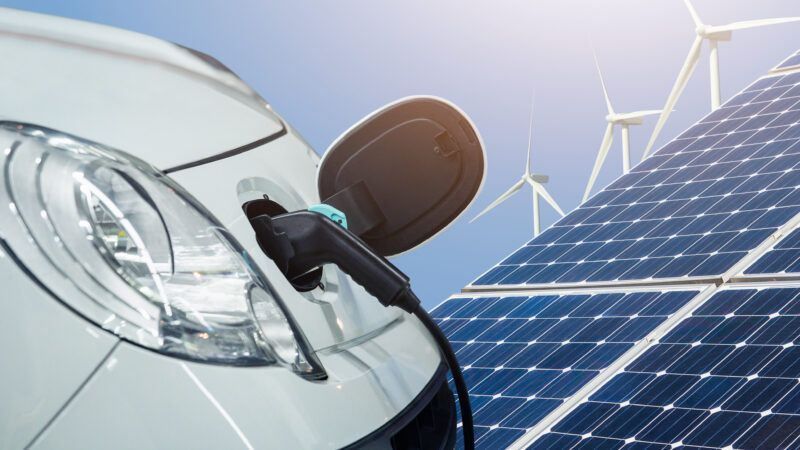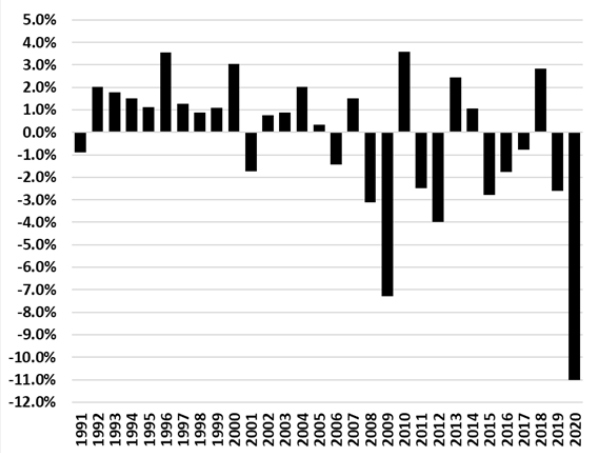Biden Will Promise To Cut U.S. Carbon Dioxide Emissions 50 Percent by 2030
The plan would require a substantial retirement of machines that run on fossil fuels.

President Joe Biden has invited the leaders of 40 countries to participate in a virtual Earth Day climate change summit starting tomorrow. To address the problem of man-made climate change caused by burning fossil fuels that load up the atmosphere with heat-trapping carbon dioxide, Biden is reportedly going to announce during the summit that by 2030, the U.S. will cut its carbon dioxide emissions from energy related sources by 50 percent below what the country emitted in 2005.
Back in that year, the U.S. emitted nearly 6 billion metric tons of carbon dioxide from burning fossil fuels, which means that the Biden administration is aiming to reduce emissions to 3 billion metric tons by 2030.
By 2019 U.S. carbon dioxide energy-related emissions had dropped to just over 5.1 billion metric tons, that is, to 14 percent below their 2005 levels. In 2020 carbon dioxide emissions fell steeply to under 4.6 billion metric tons, that is, they dropped by 11 percent, largely as a result of the economic contraction associated with the COVID-19 pandemic. (It is worth noting that U.S. real GDP fell 3.5 percent in 2020.) This means that U.S. energy-related carbon dioxide emissions in 2020 were around 24 percent lower than they were in 2005. However, the U.S. Energy Information Administration projects that CO2 emissions will bounce back up to 4.8 and 4.9 billion metric tons in 2021 and 2022 respectively.
In 2015, the Obama administration promised in its intended nationally determined contribution under the Paris Climate Change Agreement to reduce U.S. carbon dioxide emissions 17 percent by 2020, and 26 to 28 percent by 2025. As a result of the pandemic, the U.S. greatly exceeded its 2020 emissions cut pledge.

So, what would it take to meet Biden's goal of cutting U.S. carbon dioxide emissions by 50 percent over the next 10 years? University of Colorado political scientist Roger Pielke, Jr. parses some figures. He notes that getting from 4.6 billion metric tons (2020) to 3 billion metric tons would require emission reductions of more than 4 percent annually. Since 1991, he notes, "The only annual reductions > ~3% occurred during global financial crisis and COVID-19, but some other years have been close, sustained annual reductions have not yet occurred."

To make cuts of this magnitude, Pielke points out, would require annually retiring and replacing 3 to 5 percent of coal- and natural gas-fired electric power generation plants, 3 to 5 percent of fossil-fueled transportation, including cars, trucks, airplanes, and ships; and 3 to 5 percent of industrial emissions from sources such as concrete, petrochemical, and steel plants. Since 80 percent of future global warming is projected to result from carbon dioxide emitted from burning fossil fuels, Pielke cautioned against "accounting games" that include reductions attributed to land use and other offsets.
A recent study commissioned by the Environmental Defense Fund (EDF) lobbying group and performed by the Rhodium Group energy consultancy traced a pathway toward a 50 percent carbon dioxide emissions reduction by 2030. That study calculates that almost 60 percent of the carbon dioxide cuts would come from electric power generation. In 2020, emissions from that sector fell from 1.62 billion metric tons to 1.45 billion metric tons. A further 60 percent reduction of carbon dioxide emissions would mean that electric power generation would be emitting only about 580 million metric tons of carbon dioxide by 2030. This implies cutting annual carbon dioxide emissions from the electric power sector by around 100 million metric tons annually for the next nine years.
The good news, according to Pielke, is that the timeline implied by Biden's pledge provides solid benchmarks that make his administration accountable, such that observers will know within a year or two if his administration is succeeding or failing to meet its emissions reduction goals.


Show Comments (108)